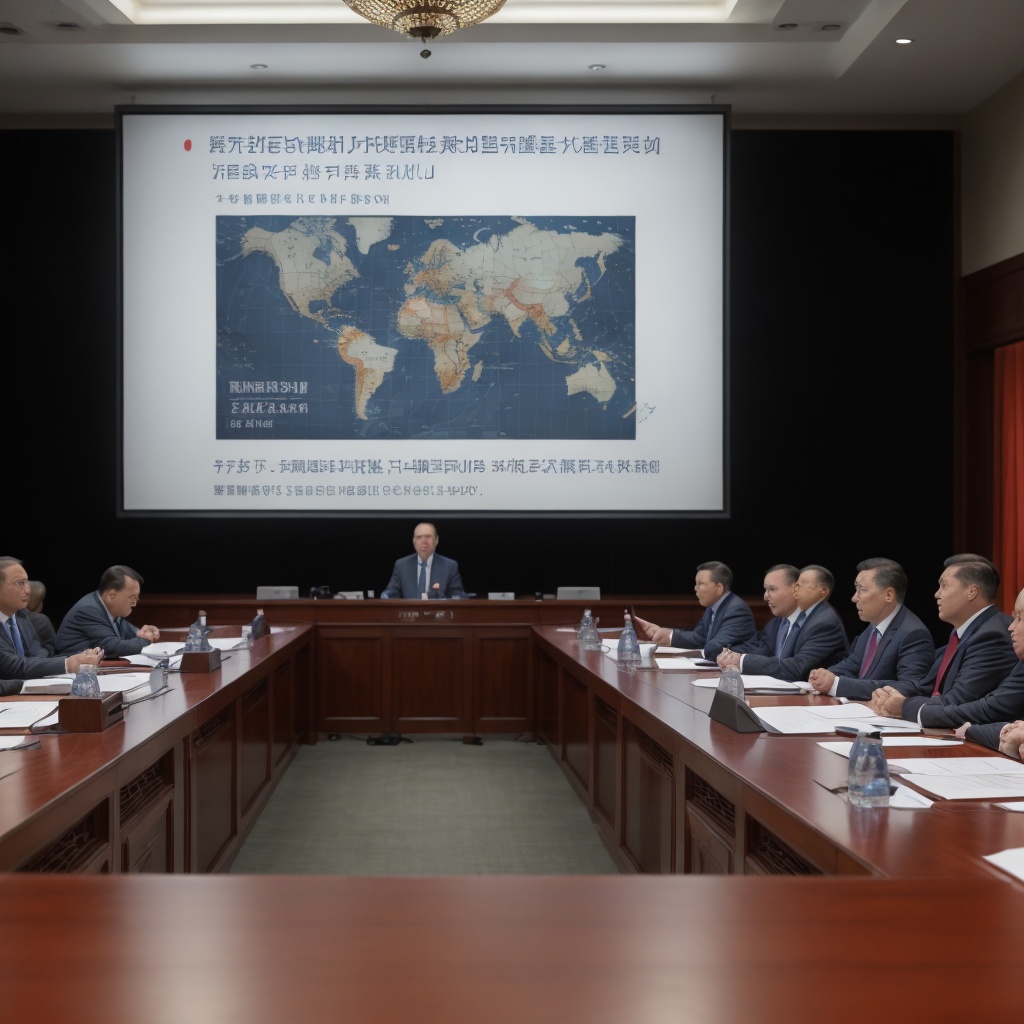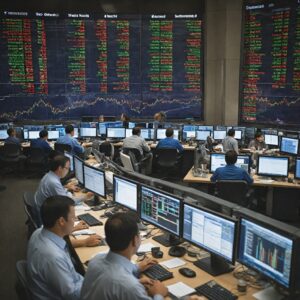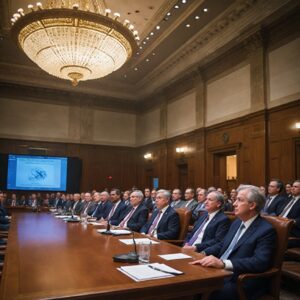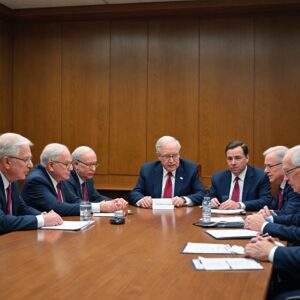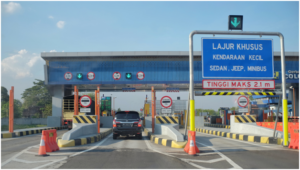summary
“Unleashing the Storm: The Impending Trade War Threat – How Will Beijing React?” is a comprehensive examination of the evolving dynamics of trade policies between the United States and China, particularly Beijing. The article explores the limitations of Beijing in outmaneuvering Washington due to the U.S.’s relative power and large trade deficit with China. With the anticipation of an impending trade war, the article details the strategic shifts in Beijing’s approach to countering Washington’s unpredictable policymaking. The analysis also underscores the nature of Beijing’s trade policies, often characterized as ‘predatory’ due to its state-directed approach which allows it to accumulate market power. The potential implications of a trade war are discussed, noting the possibility of significant economic losses and welfare implications globally. The topic is significant given the prominence of the U.S. and China in the global economy, and the far-reaching implications of their trade policies.
Understanding Beijing’s Trade Policies
The power dynamics between the United States and Beijing and their respective trade policies have been in flux over the years. Beijing, despite having various trade tools at its disposal, finds its ability to outmaneuver Washington limited due to the latter’s relative power and large trade deficit with China. This has led to Chinese policymakers planning beyond mere trade war tactics and adapting their approach to the United States. Over the past few years, they have been developing strategies to anticipate, counter, and minimize the impact of Washington’s volatile policymaking.
Experts suggest that Beijing is now more prepared than it was during the previous U.S administration, having developed new tools to resist Washington’s trade policies. A prime example of this was the anti-monopoly investigation announced by Chinese regulators into Nvidia, a U.S company. Beijing’s approach to trade policies can be characterized as ‘inside and outside’, indicating its commitment to further open up the service industry and enhance its existing foreign investment policies.
The United States, on the other hand, has been using a combination of tactics to address its trade concerns with China. This includes negotiations, disputes at the World Trade Organization (WTO), heightened investment scrutiny, tariffs, and its own industrial policies. The relationship has grown more combative over the past decade as U.S. policymakers have charted a progressively more assertive course. However, experts, including Edward Alden, a CFR senior fellow, suggest that the United States lacks effective policies for managing economic disruptions.
Beijing’s trade policies are considered ‘predatory’ due to the size of its economy and the volume of its trade. Its state-directed approach allows it to eliminate foreign competition and accumulate market power. These policies have been instrumental in facilitating technological catch-up for Chinese firms. Despite these aggressive policies, Beijing intends to further improve its foreign investment policies, a move expected to give the market a significant boost.
The dynamic nature of Beijing’s trade policies and its confrontation with the U.S has led to a complex trade scenario. This impending trade war threat is characterized by tit-for-tat retaliatory moves, a reflection of the economic conflict between the two powerful nations.
Role of Beijing’s State-Directed Economy
The state-directed economy of Beijing plays a crucial role in guiding the city’s economic development, resource allocation, and benefit distribution. This can be seen in the context of Beijing’s aggressive policies for further liberalizing the service industry, designed to encourage foreign investment and stimulate the market. Beijing’s industrial policy is an essential instrument used to regulate or stimulate enterprise behavior, thereby steering the course of industrial development.
China’s leadership contends that such a system is essential for improving the livelihood of the Chinese people, aligning with the economic strategies employed by Western nations during comparable developmental stages. Beijing has refined the model of acquiring Western technology, utilizing it to bolster domestic companies into global powerhouses, after which foreign companies struggle to compete.
Beijing’s industrial policy’s direct impact can be seen in cross-industry resource allocation. Evidence from 1986 to 1994 points to the effectiveness of the industrial policy in providing incentives and managing market openness in keeping with the planned priority. However, the same study highlights that significant efficiency gains from further participation in globalization are yet to be reaped.
Beijing has put a strong focus on the development of the so-called “pillar industries,” which comprise of high-tech sectors with capital-intensive technologies. The first explicit industrial policy was launched in 1989, leading to an increasingly industry-oriented approach to state intervention in business.
As the impending trade war threat looms, Beijing’s reaction can have substantial repercussions on global economies. A trade war could severely harm the global economy, causing losses in economic welfare for countries implementing tariffs and those subject to tariffs. The impact on Western economies could be particularly damaging, with potential for rising costs, plummeting demand, and slowing supply chain diversification. Thus, the role of Beijing’s state-directed economy in this context is a matter of global importance.
Beijing’s Industrial Policy Priorities
From the perspective of new structural economics, these industrial policies play a critical role in market efficiency and state facilitation. The study of Chinese firms’ technological catch-up also supports this view, indicating a shift towards an asymmetry-based perspective.
Public messaging about the need for domestic rather than external demand could potentially ease trade conflicts and international tensions. This approach would present more opportunities for Beijing to pursue industrial policy objectives in high-tech industries. More accurate macroeconomic data could also assist Beijing in calibrating its policies. By reframing the economic challenge, other nations, including the United States, could compete more effectively with China.
However, the enforcement of high tariffs on all U.S. trading partners could initiate a harmful chain reaction in Western economies. This could lead to increased costs, decreased demand, and a slowdown in supply chain diversification. Instead, a more viable option might be to selectively apply tariffs to critical sectors in which Chinese exports pose a threat to the competitiveness of Western industries. This approach could be paired with a proactive investment strategy designed to develop and scale critical supply chains that exclude China.
Despite the potential drawbacks, trade wars can offer certain benefits, such as the protection of domestic industries like manufacturing or defense. This can provide strategic advantages, such as maintaining domestic production capacity, despite the availability of cheaper products elsewhere.
Interactions with the U.S. policy community following the November elections indicated Chinese interest in adhering to the Phase One trade deal, which includes China purchasing $200 billion worth of U.S. products. Discussions also raised the possibility of initiating Phase Two negotiations focusing on structural reform, which would address the relationship between the Chinese government and state-owned enterprises.
The U.S.-China trade conflict has allowed bystander nations to increase their exports to the U.S. and globally, without significant changes in exports to China. The varied response is primarily driven by country-specific elements, including tariff responsiveness and sectoral scale elasticities.
Historical Overview of Beijing’s Trade War Reactions
The launch of the trade war ironically came at a time when China’s trade surpluses were no longer a global concern. By the time the U.S. tariffs were initiated in 2018, China’s current account surpluses had dropped significantly from their peak in 2007 at over 10 percent of GDP to just 0.2 percent. In response to allegations of unfair trade practices by Washington, Beijing called for continued dialogue and pointed out progress made on numerous issues.
The trade war led to a significant increase in the economic relationship between China and the European Union due to a redistribution of commodity flows. Furthermore, the conflict bolstered Chinese nationalism and the Chinese Communist Party was able to leverage the external pressure of the trade war to rationalize China’s economic slowdown.
During this period, the Trump administration took various actions against China including tightening export controls, improving investment screening, challenging Chinese technology companies, and opposing the Belt and Road Initiative. These signals sent to Chinese leader Xi Jinping carried significant weight in Beijing’s top-down Leninist system.
These trade barriers not only disrupted global supply chains and slowed the spread of new technologies, but they also lowered global productivity and welfare. Import restrictions made tradable consumer goods less affordable, disproportionately affecting low-income households. Certain countries responded by substituting Chinese exports, with nations like Vietnam, Thailand, Korea, and Mexico emerging as major export ‘winners’ in global markets for products where US-Chinese trade declined.
The fallout of these interventions led to an excess of production well beyond global demand, and with domestic demand remaining weak, a range of low-priced manufactured goods began to flood export markets. This resulted in widespread harm and led to a practice known as “economic coercion,” with several WTO Members becoming targets of Beijing’s tactics.
Evolution of Beijing’s Trade War Strategies
In recent years, Beijing has demonstrated a robust and evolving response to trade conflicts, particularly with the United States. The threat of a 10 percent tariff on Chinese goods by the Trump administration led to the development of new strategies and tools to counter Washington’s tactics. In addition to this, Beijing has taken further steps such as launching an anti-monopoly investigation into Nvidia, a U.S. company.
However, despite having various tools and strategies at their disposal, Beijing’s capability to maneuver around Washington in an exchange of tit-for-tat is limited by the United States’ relative power and large trade deficit with China. Aware of this limitation, Chinese policymakers have been adapting their approach since Trump’s first term. In the past few months, they have further refined their strategy to anticipate, counter, and minimize the damage of Trump’s unpredictable policymaking.
Ironically, the trade war was initiated at a time when China’s trade surpluses were becoming less of a global concern. Beijing has maintained that progress has been made on many of the concerns raised by Washington, and has called for continued dialogue.
Beijing’s strategies have also been shaped by the understanding that a trade war is not just about control of imports and exports. It has far-reaching effects on the trading relationship between two countries and may have additional implications for protecting certain domestic industries, such as manufacturing or defense.
The US-China trade conflict has also opened opportunities for other nations, significantly increasing their exports to the US and globally, without much change in exports to China. However, a trade war initiated by the United States could lead to serious damage to the global economy.
In this evolving landscape, Beijing has also leveraged its critical position in global supply chains, and this has had a significant impact on US consumers and companies. An increase in trade with China has been found to boost the annual purchasing power of the average U.S. household.
Chinese industrial policy is another area that has factored into Beijing’s strategies. The effects of these policies on cross-industry resource allocation have been significant. For instance, strategic subsidization of the solar industry in China has resulted in alarm over Chinese industrial overcapacity flooding the European Union with cheap products, marking a new front in the West’s trade war with Beijing.
Recent Changes in Beijing’s Approach to Trade Wars
Beijing’s approach to trade wars, particularly with the United States, has evolved significantly over the years. China’s approach during the first Trump administration was primarily reactionary. However, in anticipation of further trade conflicts, China has prepared various strategies, such as bolstering the domestic economy, deepening global South relationships, and reconciling with key neighbors.
Historically, trade between the U.S. and China has been a complex and evolving relationship. Beginning with the reestablishment of diplomatic relations and the signing of a bilateral trade agreement in 1979, the trade between the two nations grew from $4 billion that year to over $750 billion in 2022. Despite the growth in bilateral trade, several unresolved issues persist, such as the ballooning trade deficit between the two countries. These issues precipitated an economic conflict initiated by the U.S. in January 2018, which sought to address what it perceived as unfair trade practices by China.
During the unfolding of this trade conflict, China’s trade surpluses were no longer a global concern. In 2007, China’s current account surpluses were over 10 percent of its GDP. By 2018, when U.S. tariffs were launched, these surpluses had dwindled to only 0.2 percent of China’s GDP. In response to allegations of unfair trade practices, Beijing called for continued dialogue, indicating that progress had been made on many of the contentious issues.
The ongoing conflict also highlighted the impact of China’s industrial policies on cross-industry resource allocation. These policies, which emphasized the development of “pillar industries” or high-tech, capital-intensive sectors, were effective in controlling market openness and offering incentives aligned with national priorities. However, further efficiency gains could be achieved through increased participation in globalization.
In response to punitive tariffs, Beijing has also underscored the strategic advantages of protecting certain domestic industries, such as manufacturing or defense. Despite the availability of cheaper products on the world market, maintaining domestic production capacity provides strategic advantages.
On the international stage, Beijing has been mindful of signals from foreign leaders, particularly from the United States. China’s leadership owns full responsibility for its nationalistic actions and internal policies. The Biden administration has made significant contributions to competing with China, particularly on the diplomatic and technology fronts, but these efforts need further development to effectively restrain Beijing.
Diplomatic Implications of Beijing’s Trade War Responses
Despite the tools available to Beijing, its ability to outmaneuver Washington in a trade war is constrained by the United States’ relative power and significant trade deficit with China. As a result, Chinese policymakers have been exploring strategies beyond simple trade war tactics to anticipate, counter, and minimize the damage of unpredictable policymaking, particularly following Trump’s first term.
Negotiation Tactics and Tools
Negotiations between China and the United States have been influenced by cultural norms and expectations. Often, Chinese negotiators expect high commitment from their counterparts, and these relationships frequently hinge on social gatherings that occur throughout the negotiation process. An example of this negotiation dynamic occurred during diplomatic talks to allow Chen Guangcheng, a Chinese dissident, to stay in China. When Chen opted to seek shelter in the United States instead, both nations were able to avert a diplomatic crisis by agreeing to let Chen visit the United States as a student.
Regional and Global Implications
Beijing perceives the shift from a “hub-and-spokes” model to a more interconnected, lattice-like structure in the region as a significant threat to China’s interests. However, some countries have experienced economic benefits from the trade war due to increased exports to the United States and China, which are compensating for reduced trade between these two economies. Beneficiaries of this change include Vietnam, Chile, India, Malaysia, and Argentina.
Seeking International Arbitration
Current challenges call for a move away from the self-defeating cold war mentality and towards working within the international economic system to manage and reduce tensions. This initiative may need to come from Europe,
Current U.S.-China Trade Relationship
The trade relationship between the United States and China is a multifaceted one, marked by both cooperation and conflict. In 1979, diplomatic relations were reestablished between the two countries and a bilateral trade agreement was signed, paving the way for a significant surge in trade. From a modest $4 billion in exports and imports that year, trade between the U.S. and China has expanded dramatically, reaching over $750 billion in 2022. Despite being overtaken by Canada and Mexico, China remains the largest source of U.S. imports.
Trade between the U.S. and China has proven advantageous for consumers and corporations in both nations. However, it has also stirred up a fair amount of controversy. Washington officials have grown increasingly wary of the potential risks associated with China’s state-led development model. This led President Trump to levy heavy tariffs on Chinese goods, a policy that President Biden has continued while adding several new trade restrictions.
The tariffs have had mixed effects. While U.S. consumers have largely absorbed the cost of the tariffs in the form of higher prices, the overall impact on aggregate real income in both the U.S. and China has been relatively minor compared to their GDPs. However, the tariffs have also resulted in a decline in real exports and GDP for countries facing new tariffs, including the U.S..
Furthermore, the dynamics of global exports have changed. For some countries, taxed products experienced faster growth than untaxed products. Moreover, the responses to the tariffs have varied across countries, with country-specific components of the tariff elasticities playing a significant role.
Despite the contentious nature of the U.S.-China trade relationship, it remains a crucial aspect of the economic landscape for both countries. As of today, China is one of the largest export markets for U.S. goods and services, while the U.S. is the top export market for China.
Economic Impact of U.S.-China Trade Disputes
The trade relationship between the United States and China has been increasingly complex since diplomatic relations and a bilateral trade agreement were established in 1979. From an initial trading volume of $4 billion, the volume had grown to over $750 billion by 2022. China remained the largest trading partner of the U.S. until February 2019 and now holds the third position after Canada and Mexico. Despite the growth, there exist significant unresolved issues surrounding this bilateral trade, with a rapidly swelling trade deficit due to a quicker growth rate of imports from China than U.S. exports to China.
Economic Conflict and Trade Barriers
Since January 2018, an economic conflict has been ongoing between the U.S. and China. U.S. President Donald Trump implemented tariffs and other trade barriers against China, aiming to force changes in what he claims are longstanding unfair trade practices. However, the imposition of higher trade barriers disrupts global supply chains, slows the spread of new technologies, lowers global productivity and welfare, and makes tradable consumer goods less affordable, especially for low-income households. Countries subjected to new tariffs, including the U.S., have experienced declines in real exports and GDP.
Beijing’s Strategy
In reaction to U.S. trade policies, Beijing has focused on fortifying the home front and preparing for an opportunity to advance when U.S. power and global standing is potentially reduced. Key elements of Beijing’s strategy include introducing stimulus measures to boost the real economy and strengthen domestic consumption, reconciling with key neighbors, and deepening relationships in the global South.
U.S. Response and Policy Effectiveness
The U.S. has tried to address its trade concerns with China through negotiations, disputes at the World Trade Organization (WTO), heightened investment scrutiny, tariffs, and its own industrial policy. Over the past decade, the relationship has grown more combative as U.S. policymakers have adopted a more assertive stance. Despite these efforts, experts argue that the U.S. lacks effective policies for managing economic disruptions.
Alternatives and Potential Solutions
One proposed solution to mitigate trade conflicts and international tensions is a shift in public messaging about the need for domestic rather than external demand. This approach could open up more opportunities for Beijing to pursue industrial policy objectives in high-tech industries. Similarly, more realistic macroeconomic data would help Beijing in calibrating policies. For the rest of the world, including the U.S., a different framing of the economic challenge could enable more effective competition with China.
Future Implications of Impending Trade War Threat
The potential implications of a trade war initiated by the United States could have serious ramifications on the global economy, with the impact likely to cause significant losses in economic welfare for both countries imposing tariffs and those subject to them. These protectionist actions are also likely to cause collateral damage for countries not directly involved in the conflict.
A trade war could potentially erase most or all of the benefits of tax cuts for low and middle-income households, as argued by Howard Gleckman of the Tax Policy Center. Financial analysts at Morgan Stanley have also expressed uncertainty over how the trade war would end, warning of the possibility of a recession. A comprehensive review of trade war effects conducted in December 2021 indicated that US consumers of imported goods were likely to bear the brunt of tariffs through higher prices. This study also concluded that the trade war could lower aggregate real income in both the US and China.
The economic relationship between the US and China is complex and long-standing, dating back to the reestablishment of diplomatic relations and the signing of a bilateral trade agreement in 1979. The rapid growth of trade between the two nations that followed has resulted in China becoming a significant trade partner for the US, despite recent shifts in rankings.
Despite the potential economic opportunities in China for foreign entrepreneurs, a trade war could present a host of problems. China’s capacity to navigate through a trade war with the US is limited due to the US’s relative power and large trade deficit with China. In response, Chinese policymakers have been developing a strategy to anticipate, counter, and minimize the damage caused by volatile US policymaking.
Beijing is also wary of a shift from the current “hub-and-spokes” model to a more complex latticework model in the region, which it views as a potential threat to its interests. The US’s diplomatic relations with its allies and partners could play a crucial role in shaping the outcome of the technological competition between the two superpowers. In anticipation of the impending trade war, Beijing is said to be more prepared than in previous years, having developed new tools to push back against Washington.
The content is provided by Blake Sterling, Financial Pulse Now

